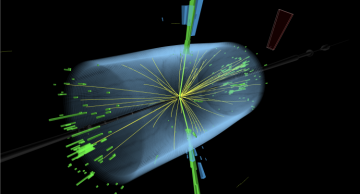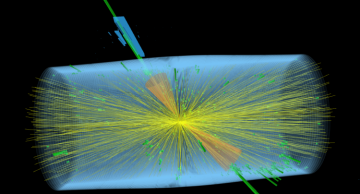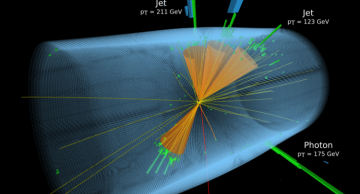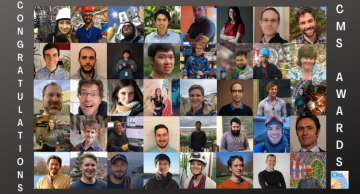Since the LHC first began colliding protons over ten years ago, CMS physicists have hoped to find evidence for one of the most popular and expansive theories of New Physics -- Supersymmetry. The key idea of Supersymmetry (or “SUSY”) is…
News
|
fblekman |
Physics
The term 'flavor' was introduced by Murray Gell-Mann and his student Harald Fritzsch to describe the different types of quarks known at the time – up, down, and strange – the list of quark flavors grew to six. The term is adapted for the lepton…
|
fblekman |
Physics
Are there more fundamental particles than the ones we currently know? Do we live in a Universe with additional spatial dimensions? These hypotheses are among the many ideas that have been suggested to explain how to unify the electroweak and…
|
fblekman |
Physics
The CMS Collaboration has released the results of a new analysis that looks for the subtle influence of “new physics” in the production of a W boson and photon pair.
The standard model of particle physics is an incredibly successful…
|
fblekman |
Physics
High energy heavy-ion collisions provide a unique opportunity to study one of the four forces of nature, the strong force, under extreme conditions. A new result from the CMS experiment shapes our understanding of the strong interaction and further…
|
fblekman |
Physics
Electromagnetic interactions govern everyday life: You see an object when particles of light deposit energy on the retinas in your eyes. Our sense of touch results from the exchange of the same particles, the photons, between the atoms in our skin…
|
fblekman |
Physics
In the Standard Model of particle physics, at least one Higgs boson is needed to explain fundamental particles’ masses. There is, however, no reason why there needs to be exactly one. On the contrary, many theories of physics beyond the Standard…
|
fblekman |
Physics
The standard model of particle physics encapsulates our current knowledge of elementary particles and their interactions. The standard model is not complete; for example, it does not describe observations such as gravity, has no prediction for dark…
|
fblekman |
Physics
Quantum Chromodynamics (QCD) is the part of the Standard Model of Particle Physics that describes the strong interaction. At relatively low energies, the Constituent Quark Model is a phenomenologically successful effective method to describe…
|
fblekman |
Physics
Fundamental particles are the most basic building blocks of the universe. It took more than 60 years to formulate a physical model to explain their interactions fully. This model is now known as the Standard Model of particle physics. Many of…
|
losmith |
Collaboration
Congratulations to CMS members who have received the CMS Award for 2020!
As is the tradition, every year during the February CMS week, members of the CMS collaboration are presented with awards for their incredible contributions and dedication…
|
losmith |
Detector
As for any other instrument, the CMS experiment needs a “quiet” environment to take data, with the lowest level of background noise. In the CMS detector, background noise is mainly due to energetic particles generated at high eta (i.e. close to the…












